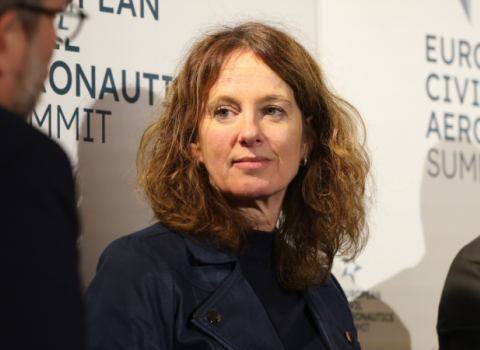The goal is to achieve, “a genuine single market for knowledge, research and innovation” allowing researchers, research institutions and businesses to move, compete and cooperate across borders, without legislative or economic barriers. A 2014 deadline for doing this was set down by the European Council in February this year.
This 2014 deadline is going to be as significant and meaningful for research as the 1992 deadline was for establishing the single Internal Market, European Research Commissioner Maire Geoghegan-Quinn said on the eve of the launch of the consultation on Tuesday (13 September). “I want the effects of this deadline to be just as visible as the changes that were brought about post-1992,” she said.
The public consultation, which the Commissioner claimed will be the widest ever to take place on research and science issues, involves a detailed questionnaire asking respondents to rank the factors that lie behind the barriers to the ERA, such as those that limit the mobility of researchers across borders, or prevent grants being portable. The survey also covers areas such as research infrastructures, the coordination of international science and technology actions, and the attributes of Europe as a research location.
“It is unacceptable that it is often more attractive and easier for our top scientists to cross the Atlantic than to move across the EU. We want the research community to tell us what they need, so we can work together to tear down barriers to growth and jobs,” Geoghegan-Quinn said.
Investment in research and innovation is increasingly being framed in terms of economic strategy and policy. The so-called Innovation Union - of which ERA is one element - is a central part of the EU’s economic revival strategy, winning the backing by European heads of state in February - the first time that innovation had made it onto the agenda of an EU Council meeting.
Asked what would happen if the 2014 deadline for completing ERA isn’t met, Geoghegan-Quinn said, “I wouldn’t countenance a situation where we wouldn’t meet it.” However, it remains unclear what needs to be achieved in concrete terms to create a unified ERA, with the Commissioner saying, “At this stage it’s too early to set out what the indicators are, and what we are looking for, and how we will judge.”
However, Geoghegan-Quinn did list five overall objectives:
- Mobility for researchers across all countries and sectors
- Joint research programmes and other cross-border cooperation
- The dissemination, transfer and use of research results, including through open access to publications and data
- Building European research infrastructures and increasing access to them
- Creating a single voice for European research
The ERA must be inclusive, Geoghegan-Quinn said. “It’s not going to be an ERA just for high flyers. It has to be an ERA for all of the member states, for all of the regions.” While excellence will not be compromised, the gap between excellent and struggling member states cannot be allowed to widen. Geoghegan-Quinn said one possible way to ensure this doesn’t happen is to encourage cooperation between, “the excellent and the less excellent.”
The Commissioner also pledged that newer member states will get the support they need to build research infrastructure. In addition, there will also be closer alignment between the research budget and structural funds.
The European Research Area was first proposed by the European Commission in January 2000. It was given renewed impetus in 2007 in a Green Paper. The Treaty of Lisbon, which came into force on 1 December 2009, introduced a legal basis for its creation.
The public consultation launched this week runs until 30 November, with the results due to be published early next year. The Commission will then draw up plans for an enhanced ERA Framework before the end of 2012, as requested by the Council. Feeding into this proposal will be work by the European Research Area Board (ERAB), which in 2009 produced a report setting out a vision of ERA, followed in 2010 by a series of policy proposals and recommendations for turning the vision into reality.
VIEWPOINT
The 2nd euro crisis is coming to a lab near you
It’s hard to care about the European Research Area. But creating a single market for research is important and the Commission needs to show the world why more...
Public consultation: http://ec.europa.eu/research/consultations/era/consultation_en.htm




 A unique international forum for public research organisations and companies to connect their external engagement with strategic interests around their R&D system.
A unique international forum for public research organisations and companies to connect their external engagement with strategic interests around their R&D system.